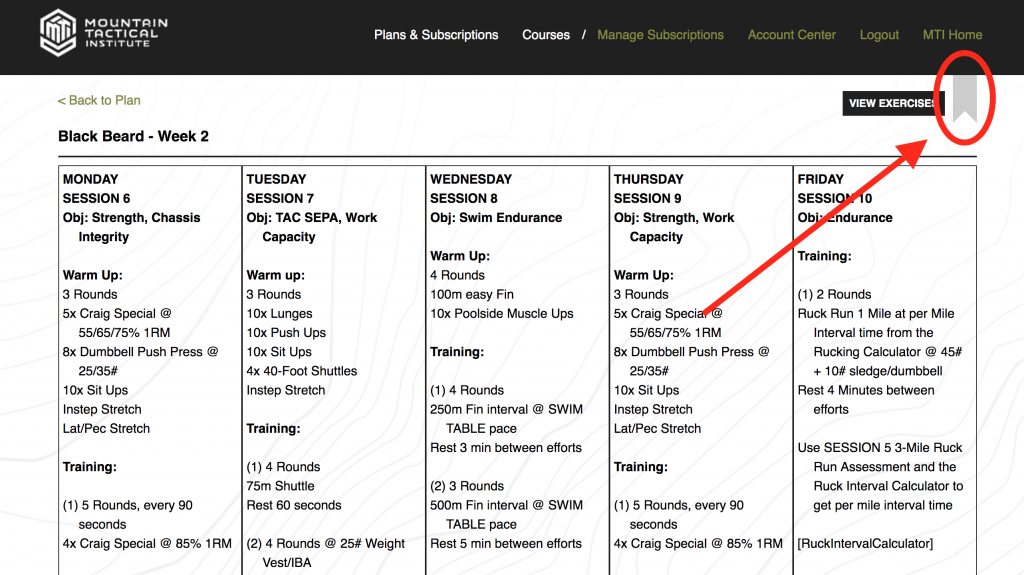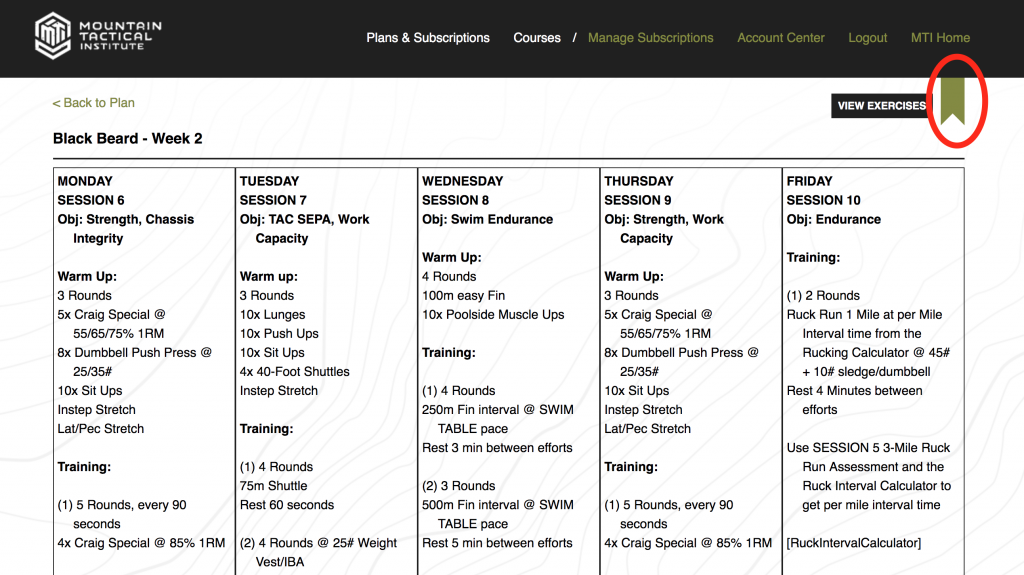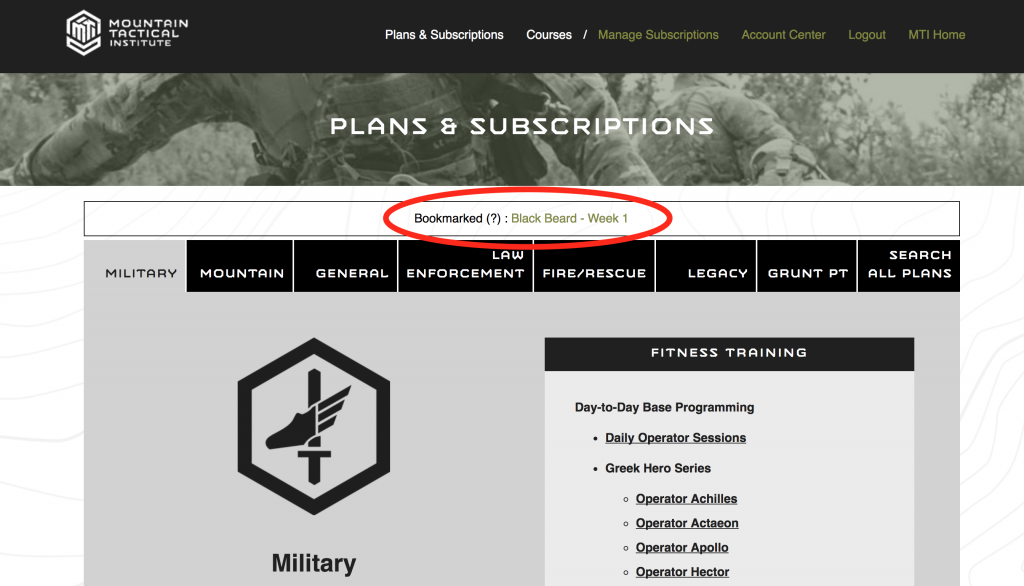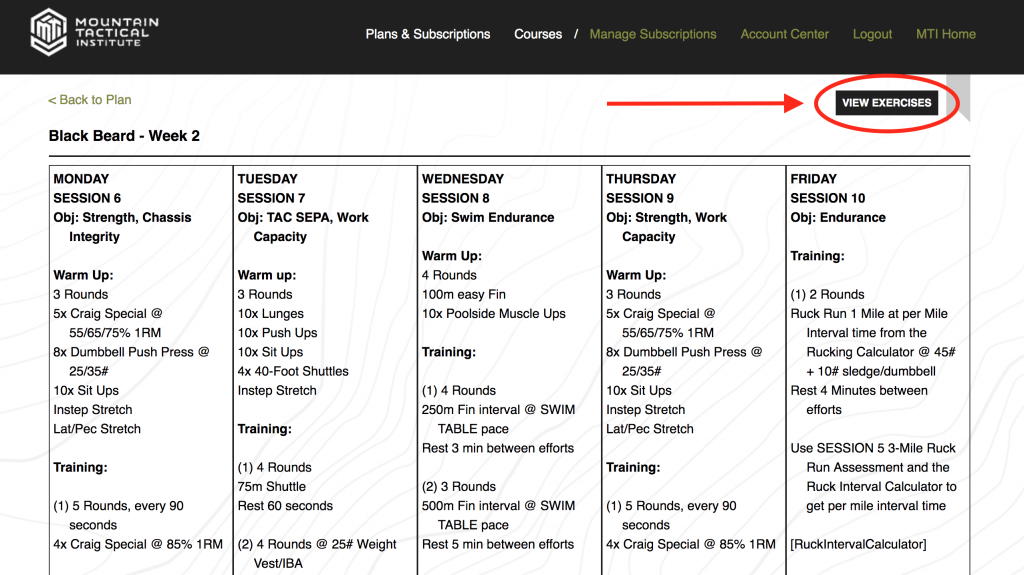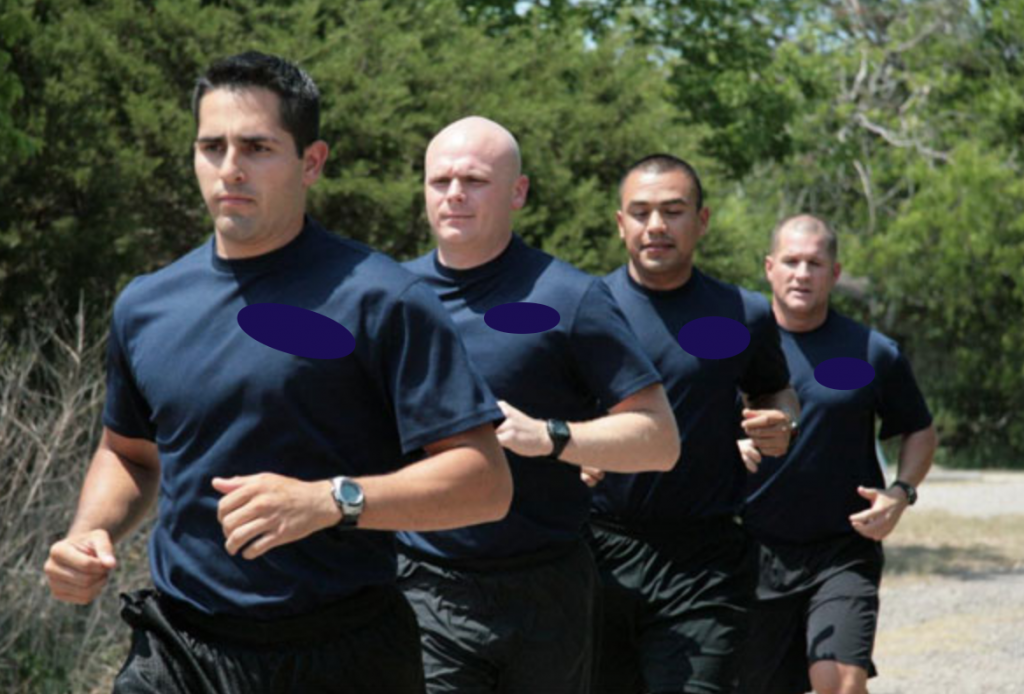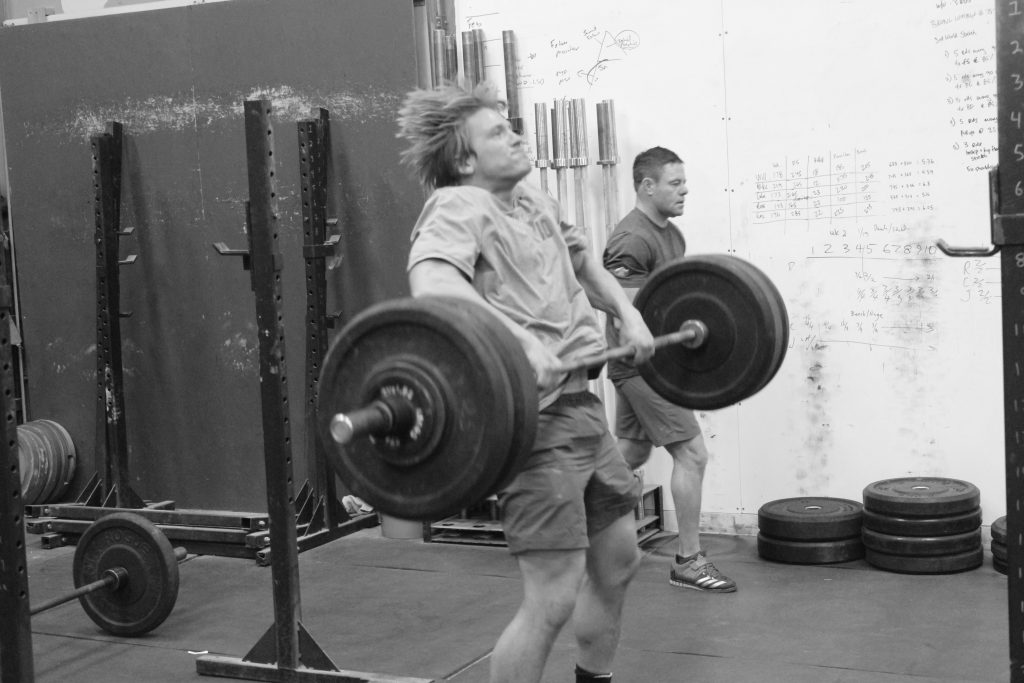QUESTION
Hi, I have about 4 months to prepare for Army basic training. I’ve been dragging my feet and have become kinda a slob, what program do you recommend for me to not die during basic?
ANSWER
QUESTION
I have purchased the APFT improvement plan and am interested in suggestions of a barbell based plan to incorporate into my weekly training. I am fairly experienced around the gym but my current plan (self developed) has grown stale. Additionally, I have failed to develop a core strengthening plan and have pretty much relied on cardio, flutter kicks, and planks as my “core work”. My ideal intent is to build strength and endurance through a combination of mobility, barbell/dumbbell work, cardio, and diet.
If it is of any need, I consider myself moderately fit (6’2″ 205pds and average between a 270-285 on the APFT since I joined, sub 1:45 half marathons) I will be 32 later this year and have been in the army since I was 19 (Cav Scout then Artillery Officer) but I can still keep up with the majority of the younger crowd. I have some minor aches and pains in the back and left shoulder, but I’m not on any type of profile and am not hindered in any other way.
ANSWER
It’s a little unclear what you’re asking for.
If you’re completing the APFT Training Plan and want to supplement it with a strength plan, I’d recommend
Rat 6 Strength.
If you want a comprehensive training plan designed for military athletes which concurrently trains strength, work capacity, chassis integrity (core), endurance (running/rucking) and tactical agility – complete
Hector from our Greek Hero Series.
QUESTION
Coach,
I have some kudos and some questions.
Thanks for the APFT Improvement Plan. That was my first program from MTI and it allowed me to come off a bad infection that prevented me from training and score a 300 on my APFT after only three and a half weeks of the program. The best part was the casual level of effort it took thanks to the very dense programming of calisthenics.
Major kudos on chassis integrity. I think it is one of the most significant aspects setting your training aside from any other system. I happened across MTI by reading an article from Outside Online titled “The New Rules of Core Fitness.” The arguments seemed solid to me so I integrated some of the example exercises into my regular training to experiment with them. I injured my back December of last year and was still experiencing residual pain in early June. Using exercises like sandbag getups and keg lifts seemed to wring out whatever was causing the discomfort and I’ve been feeling and performing much better since then. Now that I’m doing Military On-Ramp, I think that the chassis integrity has also helped me improve my rucking and running. I feel as though I don’t lose as much energy in my stride thanks to superior coordination through my trunk.
I notice you use the front squat for strength standards in assessments and studies, but it appears that the back squat is programmed very frequently in your strength programs like Big 24 as well as much of the Virtue series. I understand an athlete can move more weight with the back squat, but I’d like to know if there are other reasons. I’m a lanky guy with long femurs and coming from a completely biased direction with this question.
Second, with the intervals that the running calculator produces, should I aim to stay in the range provided for all the intervals? I’m typically able to run much faster than the prescribed range for the first two intervals of 800m or 1mi repeats, and then the rest I complete in the window provided.
Last question is about recommended body composition for military athletes. I’m working up to a selection program, and while I consider myself to be reasonably fit, I think I’m a little on the light side. I’m male, 25, 6’1” and a very consistent 177lbs around 5-7% body fat. The heaviest I’ve been is 188lbs with the same body fat coming back from Afghanistan in 2016 after several consecutive months of Wendler’s 5/3/1 – Boring but Big and unlimited free food. I’ve reviewed your rucking articles and understand that higher bodyweight and a heavier squat max tend to result in superior ruck performance in males. Reading the Q&As I notice that you tend to recommend to male athletes 6’ and up to be 200lbs or more. Should I complete the Hypertrophy for Skinny Guys program before beginning the SFOD-D packet or just bump up the calories and continue onto Humility after Military On-Ramp?
ANSWER
Back Squats? No reason – we program front squats also.
Intervals? These are designed to be threshold. That the first 2 are easy tells me you didn’t truly push during the assessment. Make sure you do.
Bodyweight? Continue with Humility after On-Ramp. AT 25 you should be “filling out” – but you may simply be one of those wire-ry guys who is strong, but skinny.
– Rob
QUESTION
Ok, so I am aging Law Enforcement professional who works long overnight shifts. I recently subscribed the MTI and love the programming, essays, and weekly newsletter. I exercise regularly both inside and outside the gym. I am looking for some fresh ideas to kickstart my morning (late afternoon since I sleep during the day) especially after I work five nights in a row. I am a veteran and was thinking of just doing some good old fashion military calisthenics to get the blood moving. What are your shift workers doing? Since this “wake up routine” will not be my full bore workout of the day would you suggest limiting it in anyway? Time, effort, etc?
Keep up the great work!
ANSWER
The training plans in the
Spirits Packet are our day-to-day programming for LE Patrol/Detectives. These plans concurrently train strength, chassis integrity, tactical speed & agility, and upper body hypertrophy, and require a gym. Sessions are designed to last 45-50 minutes. Start these plans with Whiskey.
I’d recommend making these plans the focus of your professional fitness, and completing them before your shift.
This is my recommendation.
It sounds like you have your own thing you do after work, and are looking for a bodyweight plan prior. If you chose this route, I’d recommend the
Bodyweight Foundation Training Plan as your “wake up” routine.
– Rob
QUESTION
Hey Coach,
4 month deployment coming up on a pretty small ship. If I get past the ability to do 10 full sets in a workout, and want to see gains reflected in the 3rm-1rm area when I get back, can I add dumbbells or weight vest to the leg-blasters? Is there a plan for that?
Thanks,
ANSWER
Work up to 6 Rounds of a Full Leg Blaster with 1 minute rest between. Then transition to the
Quadzilla Complex – start at 3 Rounds of 5 Reps and work up to 6 Rounds of 5 Reps.
– Rob
QUESTION
Greetings- First, thanks for all your stuff. I love the philosophy, workouts, and other guidance (articles). It’ straight forward, down to earth, and honest. I’m a 50yr old LE who dabbles in your workouts, CrossFit, and triathlons. I typically look for free workouts and such (although I have bought three sandbags from you cats) but am looking to buy one of your training programs. On the tail end of triathlon season, I am looking for a program that will increase my overall strength and possibly include some endurance. Any recommendations would be great. You’ve got a bunch of great looking ones and it’s hard to choose! Thanks for any feedback. Keep up the great work.
ANSWER
I’d recommend the plans in the
SF45 Training Packet. This programming is specifically designed for high-impact athletes age 45-55.
– Rob
QUESTION
Just wanted to give my thoughts and opinions on your UBRR prep.
First test scores
Age 30 BW 220
Bench 175 20
Pushups 53
Situps 40
Pullups 17
Dips 27
Rope pass
Kipp up 10 (grip)
4×25m sprint 21sec
5mile ruck 62min
Score 1,215
Finale score
Age 30 BW 222
Bench 225 25
Pushup 63
Situps 43
Pullups 22
Dips 33
Rope pass
Kipp up 13
4x25m 18sec
5min ruck 55 min easy (very hot 90°)
Score 1,408.
I made some modifications (dread of any program author.) I increased the bench to BW in training and in testing (225.) Also dropped the shuttle sprint training to 50m or 2x25m I found that I was pacing myself with the full 100m and that my time decreased in my second test (week 3) by going shorter I stayed very explosive and pushed harder. I feel it helped.
Limiting factor of my situps was speed of movement I can do high 70’s in 2min. I tried moving fast in training but little change on test day. Grip was my limiting factor on the Kipp ups I started incorporating dead hangs for 10sec after my work sets during the rounds, but only for the last two weeks of the program. I feel if I had done this early it may have helped much more.
The ruck was easy and I paced do to the temperature. Body felt fine and I recovered well from day to day. Obviously I made improvements overall to my score. You gentleman have a good day and keep up the good work.
ANSWER
Thanks for the feedback! We generally see a 15-20% improvement in our assessment programming for fit athletes who do it – which seems to be inline with how you did.
– Rob
QUESTION
I recently finished the Big 24 v4 and am happy with my results. I am beginning the APFT plan this week. Are there other plans you would recommend in conjunction with the APFT plan so I don’t lose too much weight lifting strength?
ANSWER
No. But if you insist, wait a couple weeks and make sure you are hitting the
APFT Plan progressions. If so, you could add is some strength work 2-3x/week as 2-a-days …
Rat 6 Strength would be an option.
However, if you fail to meet the APFT progressions, pull back from some strength exercises (upper pressing, specifically, legs for the run).
– Rob
QUESTION
First, I have used your Ranger prep v1 and ruck program v3 successfully in the past. Recently I have been rehabbing ucl tears in both hands, compression fractures in t-spine as well as damage to right knee and hip and then infection to same hip. I started Crossfit back in November and, noticing serious lack in my ability to run, began your running improvement program four weeks ago. I’d like to know what strength or other program I should pair with the running program moving forward. I am about six months out from PT test and about 10 months from UBRR and running and pull-ups (grip and back) seem to be where I am struggling the most.
ANSWER
I’d have you switch to a plan which concurrently trains strength, work capacity, endurance, chassis integrity and agility, rather than try and do two separate plans together.
If you’re determined to continue with the Running Improvement Plan, you could par it with
TLU Strength as two a days or by alternating sessions between plans daily.
– Rob
QUESTION
I apologize in advance for the length of this message. I have been greatly helped by your advice during my time at USMA, prior to Ranger School, during my recovery from multiple injuries following Ranger Schools, and by your programs in general, which I have followed for the better part of the last 7 years of my military career. I am greatly in debt to y’all and your great work. I am writing to humbly request your advice and recommendation regarding how to train and recover from a recent diagnosis.
In late September of 2016, I began to experience symptoms of chronic tiredness and blood loss during bowel movements that was far different than the heavy lifting induced hemorrhoids I had experienced occasionally in years past. These symptoms persisted with increasing severity over time. My “hard-headed” attitude assumed I could just power through it and that the symptoms would solve themselves over time. By May of 2017, I determined I had to have the problem assessed, due to how drastically my performance had dropped in all categories. I went from a 2 mile in 12:45 to a 14:49, lifting heavy sets of hinge lift at 395 to 265, and dropping from a lean 172# to 158#. I was grasping at my fitness performance with no success and finally “dropped off the deep end” in June, when I was seen by the doctor and diagnosed with ulcerative pan-colitis, anemia, and iron and vitamin D chronic deficiency. My hemoglobin and hematocrit levels are both below healthy levels. In summary, the doctor said that due to my body’s inability to absorb nutrients (as a result of the immune system-related disease), my body was constantly in a malnourished state (burning muscle due to malnutrition in Ranger School was his example).
I was given medication that has been very successful in suppressing the symptoms of the disease, and am taking every supplement under the sun (Multivitamin, Omega 3s, whey protein, beta alanine, creatine, Sportlegs, iron) in an attempt to recover my weight/muscle mass and aerobic endurance. Also on week 4 of the Whole 30, trying to self-diagnose any triggers for the symptoms of the colitis.
Thankfully, I am blessed with a Commander who has personal experience with a similar disease in a family member, who is happy to protect me to rest and to train as necessary to return to full health. Based on the recommendation of others with this condition, I’ve mixed hypertrophy training (~3x/week) with interval based aerobic efforts (2x/week) and a few long Z1 endurance efforts (1-2/week) in my personal plan in an effort to fight what this disease has stripped from me, for lack of a better term. I am using hypertrophy programming from “Hypertrophy for Skinny Guys” combined with endurance methodology from Jack Daniels and Scott Johnston. I’m seeing some return in muscle definition, but minimal weight gain (now ~161#). My most recent blood tests show another drop in hemoglobin/hematocrit again after an initial rise, even after 2 months of supplementation and a full month of rest before easing back into training at a reduced load and intensity. My body is rapidly recovering its anaerobic endurance (previously the best of my personal fitness attributes), but my strength is still pathetic and my aerobic system is entirely out of whack. A 4-mile formation run last week that felt pretty easy at an average pace of 8:50 had me in Z3 almost the entire time. It seems like my Lactate Threshold is as low as it could be.
Any advice that you might have would be immensely appreciated.
Thanks for all you’ve done and continue to do in the fitness and service communities.
ANSWER
I don’t have any direct experience working with athletes with your condition – so take that in mind with my recommendation.
What I recommend is you stop all endurance and work capacity training and focus on strength/hypertrophy, and nutrition. You may need to do the occasional formation run, or whatever, and suffer through it, but currently, your endurance training is negatively impacting your strength/mass gain.
Plan? From our stuff –
Ultimate Meathead Cycle, which combines strength for the lower and total body, and hypertrophy for the upper body. Avoid the work capacity efforts in the plan. Just lift.
Also – try to eat a small jar of peanut butter each day.
– Rob
QUESTION
Good afternoon. I will be competing in an event here in San Diego called the Raider Challenge. Last year, it was a 12-hour long smoke session hosted by Navy SEALs, Green Berets, and MARSOC guys. It included a lot of rucking, pushups, pullups, burpees, and surf torture, etc. I completed it with a group of fifteen people and no attrition.This time it will be 24 hours long in total and after the twelfth hour, the cadre will beginning dropping those who cannot meet the standard and keep up.
I am 5’10 and 160lbs. How would you advise that I proceed? Thank you in advance.
ANSWER
QUESTION
Rob
I am heli sking for 5 days at the beginning of March next year and I want to be able to “send it” for five days straight. I mountain bike 2-3 days a week and do crossfit 2 days a week now. I live in Colorado and should be able to ski 15-20 days before my trip as a weekend warrior. I am looking for a program to set me up for this trip. What should I consider in addition to your Dryland Skiing Program?
Did Mountain Athlete team up with North Face for a ski conditioning app a few years ago? Wasn’t that your gym?
ANSWER
Yes on the TNF program.
– Rob
QUESTION
Afternoon sir. I’m in the air guard full time not just a traditional. I am prior army infantry and just cross trained from vehicle ops to security forces.I am at lackland now for there tech school. I am wondering if I can sign up for the daily pt? If not I plan on going to Raven school and the combat leadership course. And if they will let me the pre ranger course. At the end of this enlistment my plan is to go tacp. I’m needing advice on which program I should use to help prepare me for this journey sir. I max my push ups and sit-ups but need help getting my run under the 10 min mark. I run between 10:50 and 11:30 now. Help me please lol! Thank you for your time sir.
ANSWER
Follow it up with the plans in the
Greek Hero series of training plans, beginning with Hector. These are designed as our day-to-day training for military athletes.
You can purchase these plans individually. As well, all these plans, plus hundreds of others, come with an
Athlete’s Subscription to the site.
– Rob
QUESTION
Need a new plan for 12 weeks. I’m currently training to become a federal law enforcement agent in Georgia. I am also a traditional reservist EOD technician (recently came off active). Looking for a plan that plays well into both roles. Here are my current stats based on the following events:
1.5mi run: 11:01
Sit ups in 1 min: 52
Pushups in 1 min: 65
Chin ups: 15
Most concerned with improving my run, increasing work capacity, and maintaining or gaining strength.
ANSWER
– Rob
QUESTION
A while back, I purchased the TBS/IOC packet. I have 1 week left on the TBS training plan. I noticed that the IOC plan is 6 weeks of programming, which I will likely disperse over the last 9 weeks of TBS. That leaves about 30 weeks between my report date and the IOC plan to play with. I am close to achieving all of the MTI tactical athlete strength standards. I believe my weaknesses are military endurance and O course stuff. What would you recommend I fill those 30 weeks with? About 20 weeks of programming seems reasonable while I juggle other demands of TBS (O course, E course, field time, etc).
ANSWER
QUESTION
I’m down at Fort Benning right now going through Infantry Basic Officer Leadership Course (IBOLC) and I’m in charge of planning and executing PT for my platoon.
I’m using Squad PT as a foundation for my plan. According to my commander’s guidelines my weeks have 2x Strength, 1x Work Capacity, 1x Endurance (mile intervals or ruck) and 1x “Combat-focused” PT (which is just PT in full cammies and boots with a combat load using skedcos, litters, ammo cans, or anything related to moving and operating with a combat load).
Do you have any suggestions for the combat focused PT? All of us are training up for Ranger (class starts in February) and we are required to do the RPAT (Ranger Reg’s combat fitness test) during this course. I want all of these guys to be the most prepared for the challenges ahead of us.
ANSWER
QUESTION
I’ve been doing the APFT Improvement plan for eight weeks. I completed version 1, took a week off, and now I’m on week 3 of version 4. My run times have steadily improved, but my push ups and sit ups have been stuck since week four. I was an unfit athlete, not having done any exercise since I left the military 7 years ago. I need to loose about 20 pounds, but I don’t know how I can do push ups and sit ups to failure 3 or 4 times a week and not improve a single rep in a month. Any ideas?
ANSWER
What you’re experiencing is “accommodation.” Essentially, you need to change up the progression methodology to keep improving. In simple terms, everything works, but nothing works forever.
For push ups, you can try one of the non-density methodologies in our
Push Up Improvement Packet. Sit ups? Not sure there, we’ve only developed one progression for sit ups.
Obviously, losing 20 pounds will improve both.
– Rob
QUESTION
I’m looking for some guidance in regards to choosing the right plan for me. I am 28 years old and a full time law enforcement officer who has been an avid crossfitter for the past 5 years. In approximately 10-12 weeks I will be taking a pst for our departments maritime team. The pst is very similar to the PAST training plan. My goal is to start the PAST program approximately 6-7 weeks before my test date. In the meantime I am looking for a plan to follow but I would also like to swim or run 2-3 times a week without losing strength. I was considering doing the Big 24 v4 in the morning and adding a run or swim at night. I was also considering doing the daily LE series and adding a run or swim at night but I am not sure if that will be too much. Please let me know if you have any recommendations. I really appreciate your time.
ANSWER
I’d recommend
Barbossa from our
Pirate Series of training plans. These plans are designed as day-to-day training for tactical athletes with water-based mission sets. You’ll spend one day in the pool. You’ll also train strength, work capacity, running endurance, chassis integrity and tactical agility.
– Rob
QUESTION
I’m about 2 months into using MTI and absolutely love it – thanks and great work. I developed a modified in-season ski maintenance program for an in-season mountain biking program and just completed 2 days riding in Park City (while wearing a boot for a broken ankle) and felt the strongest I’ve ever felt on a bike. Thanks!
I’m looking to get my wife on a program. Question – she runs 7 miles / day 3-4 days a week (every other day) and would like to integrate a lifting program on the alternate days. She currently uses a beach body video program, but I’d like her to switch to MTI. Goal is run maintenance but with lifting to increase bone density as she is almost 40 years old.
Which program do you recommend for her? She loves the every other day running (for the dog and to take a break from the kids), so that’s non-negotiable, but I’m hoping I can modify one of your plans.
ANSWER
Thanks for the note and glad our stuff is working for you.
– Rob
QUESTION
I am an Active duty service member looking for a solid plan. I’m looking for a well balanced level of fitness. Meaning I want to excel at the APFT but also put on a little extra pounds because I am an extremely hard gainer and skinny individual. So I’m not looking to just do push-ups and sit-ups all day, but get a little gym time in lifting weights. Hope, that makes sense and looking forward to hear back on what your recommendation is.
ANSWER
– Rob
Subscribe to MTI's Newsletter - BETA

